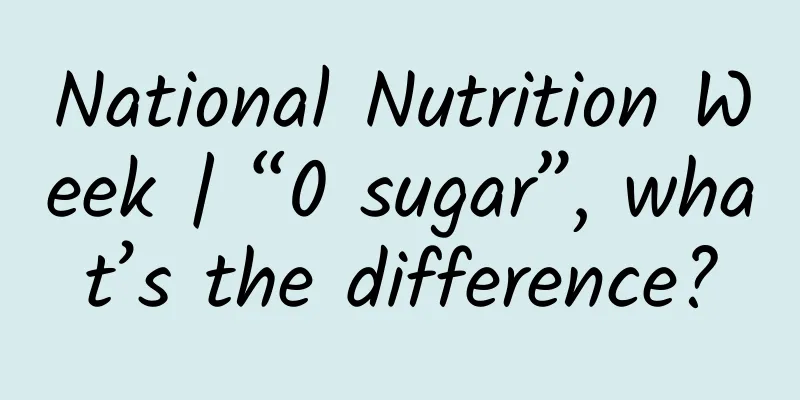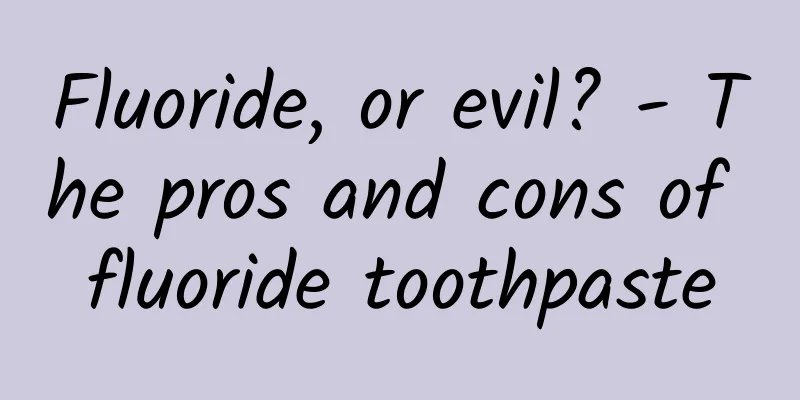National Nutrition Week | “0 sugar”, what’s the difference?

|
Why are low-sugar and sugar-free products so popular? In recent years, foods labeled "low sugar", "sugar-free" or even "0 sugar" have flooded the big and small screens and supermarkets. It seems that everyone is avoiding "sugar" as much as possible. Why is this? As the living standards of Chinese residents improve, chronic diseases caused by excessive energy intake are on the rise. According to the latest 2020 "Report on the Nutrition and Chronic Disease Status of Chinese Residents", the number of overweight and obese people in Chinese adults over the age of 18 has exceeded 50% of the total population. The situation of diabetes related to sugar metabolism is also not optimistic. In 2012, the prevalence of diabetes among Chinese adults reached 9.7%, which is equivalent to doubling the prevalence in 2002 (4.2%). The National Nutrition Plan (2017-2030) issued by the General Office of the State Council clearly proposes to actively promote a healthy lifestyle for all the people and widely carry out special actions focusing on "three reductions and three healths" (reducing salt, oil and sugar, healthy oral cavity, healthy weight and healthy bones), among which "reducing sugar" is one of the important contents of controlling energy intake. However, people's preference for sweetness is innate. Babies will smile after tasting sweetness on the first day of their birth. How can we satisfy people's preference for sweetness without consuming too much sugar? This is an important issue, especially for people who need to control their sugar intake. Sweeteners, as food additives that give food a sweet taste, provide a viable option for these people. Due to their high sweetness, low or no energy, stable process performance, and high safety, sweeteners have been increasingly widely used in food and beverages in many countries and regions over the past 100 years, and various "low-sugar", "sugar-free" and even "0-sugar" foods and beverages have become the new darlings of the food industry. Does “0 sugar” really mean no sugar? my country’s national food safety standards have strict definitions regarding the labeling of sugar content on packaged foods and beverages. According to the requirements of GBZ21922-2008 Basic Terminology of Food Nutrients, the concept of "sugar" on food packaging includes all monosaccharides and disaccharides, such as glucose, fructose, sucrose and maltose. It is neither "sugar" in the broad sense, that is, carbohydrates, nor "sugar" in the narrow sense, that is, sucrose. Therefore, "0 sugar" and "0 sucrose" are still different. As for the relationship between these monosaccharides and disaccharides, it is shown in the following table: So what is "sugar-free" or "0 sugar"? According to the definitions of "sugar-free" and "low sugar" in "GB 28050-2011 National Food Safety Standard General Rules for Nutrition Labeling of Pre-packaged Foods", when the content of monosaccharides or disaccharides in food or beverages is ≤0.5g/100g (solid) or 100ml (liquid), it can be labeled as "sugar-free", "sugar-free" or "0 sugar"; when the content of monosaccharides or disaccharides in food has not yet reached the sugar-free standard, but the content is ≤5g/100g (solid) or 100ml (liquid), the food or beverage can be labeled as "low sugar". Sugar and non-sugar In order to maintain a sweet taste while catering to consumers' "sugar-free" and "low-sugar" consumption needs, businesses will choose to use sugar substitutes or sweeteners to replace part or all of the added sugar in food formulas. Low/zero-calorie sweeteners are ingredients added to foods and beverages to provide sweetness, providing very few or even zero calories. Currently, the sweeteners approved by the state for commercial use include saccharin sodium, acesulfame potassium, cyclamate, aspartame, sucralose and steviol glycosides. In addition, there are sweeteners with the word "sugar" in their names but are not sugars. Sugar alcohols such as xylitol, sorbitol, erythritol and maltitol are also sweeteners. They provide consumers with a solution to reduce sugar intake without sacrificing sweetness. From the initial sodium saccharin to the current various sugar alcohols, due to consumers' preference for the initial raw materials of sweeteners, the choice of sweeteners is increasingly inclined to ingredients close to natural monosaccharides and disaccharides, such as maltitol, etc., but in fact, as long as the sweeteners are added in strict accordance with the types and dosages of national food safety standards, they are safe for human health and there is no need to worry about them. In particular, the safety of sugar alcohols that are similar to natural sugars in structure is very reliable. Low/zero-calorie sweeteners offer a simple way to reduce energy and sugar levels in our diets without compromising our enjoyment of sweetened foods and beverages. Numerous scientific publications have extensively documented the nutritional benefits of low/zero-calorie sweeteners for humans, such as oral health, hypoglycemic and insulinemic responses, and weight management, due to their low or no cariogenicity and slower or incomplete intestinal absorption. Sweeteners are widely used in more than 100 countries and regions, including the United States, the European Union and China, and some varieties have been used for more than 100 years. The safety of sweeteners has been recognized by international food safety agencies. The scientific evaluation conclusions of the approved sweeteners by the Codex Alimentarius Commission, the European Food Safety Authority, the US Food and Drug Administration, the Australian New Zealand Food Standards Agency, and the Canadian Ministry of Health are that the use of sweeteners in accordance with relevant laws and regulations will not cause harm to human health. my country's "National Food Safety Standard for the Use of Food Additives" (GB2760-2014) has specific provisions on the types of sweeteners allowed, their scope of use and their maximum usage. These regulations are based on the scientific risk assessment results of experts, and as long as they are used in accordance with the standards, they are safe. Let’s take maltitol as an example. This is a sugar alcohol obtained by hydrogenating maltose. It can produce the same sweetness as sucrose when used in food. However, since its chemical structure is different from that of sucrose and maltose, it does not cause drastic fluctuations in blood sugar and blood insulin like sucrose or maltose, nor does it produce as much calories as digestible carbohydrates. It has a certain positive effect on controlling weight gain and stabilizing blood sugar levels. In addition, due to the change in chemical properties after hydrogenation, maltitol will not be fermented by bacteria to produce acid, especially it will not be used by bacteria in the mouth to produce acidic substances that corrode tooth enamel, so it will not cause caries like sucrose, and has a certain anti-caries effect. Moreover, according to the "GB 2760-2007 Hygienic Standard for the Use of Food Additives", there is no upper limit on the amount of maltitol added to foods such as candy, bread, cakes and biscuits, which shows its safety. In 1964, Japan had already started industrial production of maltitol, and maltitol has been commercialized in Europe and the United States for many years. The FAO/WHO Joint Expert Committee on Food Additives does not set a limit on the maximum daily intake ADI value. Many countries, including France, Switzerland, Belgium, Denmark, Finland, Norway, the United Kingdom, Sweden, Australia, Japan and the United States, have approved the use of maltitol in food. It can be seen that its safety is recognized worldwide. 0 sugar = 0 energy? First of all, a simple answer is that "0 sugar" does not mean "0 calories". From the perspective of consumer purchasing psychology and general cognition, when choosing standard "0 sugar" or "low sugar" food or beverage, you are actually choosing a low-calorie food or beverage, because in various correct or incorrect nutrition knowledge propaganda, people have established an implicit connection between "sugar" and "calories" and "unhealthy". However, we need to point out here that in some foods and beverages, "0 sugar" does not mean "0 calories". What is going on? First, we have to go back to GB 28050-2011 National Food Safety Standard General Rules for Nutrition Labeling of Prepackaged Foods to find the description of energy (i.e. calories). When the energy provided by a food or beverage is ≤17kJ/100g (solid) or 100ml (liquid), and the energy provided by fat is ≤50% of the total energy, the food or beverage is considered "energy-free" or "0 energy", so foods or beverages marked "0 calories" are not truly absolutely calorie-free. Moreover, in some foods, in addition to monosaccharides and disaccharides, there are other unavoidable food ingredients that also play an energy supply role. For example, in addition to sugar, biscuits also contain flour, which can produce energy after digestion by the human body. Therefore, for foods like biscuits, even if no sugar is added, it is impossible to completely meet the "zero calorie" standard. This is different from beverages that rely entirely on adding sugar or sweeteners to introduce sweetness and heat energy components. Beverages can strictly meet the "zero calorie" standard. However, life itself is supported by energy activities. The endless pursuit of "0 energy" or "0 calories" is irrational. Excessive anxiety about calories is not only unnecessary, but also adds unnecessary trouble to life. Why not learn to enjoy food, enjoy sports, and make life better instead of worrying about those strings of numbers? After all - Only love and food cannot be let down! References: [1] 2020 Report on the Nutrition and Chronic Disease Status of Chinese Residents [2] GB/Z21922-2008 Basic Terminology of Food Nutritional Components, a national standardization guidance technical document of the People’s Republic of China. [3] National Standard of the People’s Republic of China “GB28050-2011 National Food Safety Standard General Rules for Nutrition Labelling of Prepackaged Foods” [4] National Standard of the People’s Republic of China “GB 2760-2007 Hygienic Standard for the Use of Food Additives” [5] National Standard of the People’s Republic of China “GB 28307-2012 National Food Safety Standard Food Additive Maltitol and Maltitol Liquid” author: Xing Qingbin Xiang Xuesong | Institute of Nutrition and Health, Chinese Center for Disease Control and Prevention, Probiotics and Prebiotics and Health Branch of Chinese Nutrition Society |
<<: One reason is enough to advise you to eat more yam!
Recommend
What are the side effects of long-term oral contraceptives?
Many people take some contraceptive drugs when th...
Is it okay to wash your vulva every day?
The female vulva needs to be cleaned when taking ...
24 weeks pregnant, no fetal movement for a day
For young men and women, pregnancy is a very happ...
If you don’t “grow” the bacteria in your mouth properly, it will affect more than just your oral health
As the saying goes, "Diseases come from the ...
How to treat acne on female chin
The skin condition of many people is actually qui...
Diagram of a pregnancy test stick with one vertical and one horizontal line
Many families want to have a cute baby after gett...
What are the symptoms of premature ovarian failure?
There are still many special parts of the female ...
What is the best way to treat and regulate moderate cervical erosion?
There is no patient who gets sick for no reason. ...
Your baby has a lot of phlegm when coughing. Do you know how to deal with it correctly?
The child often coughs, and the parents are very ...
What is the cause of uterine bleeding?
The female reproductive organ is the uterus, but ...
Women's cough is not good
Coughing is one of the most common symptoms. Coug...
What are the benefits of eating duck gizzards? How to make duck gizzards delicious
The nutritional value of duck gizzards is very hi...
What is a lithium battery? Are lithium batteries harmful to the human body?
Lithium batteries are a type of battery that uses...
Symptoms and treatment of balanitis
Balanitis is a common reproductive disease in men...
What causes bright red vaginal bleeding before period?
As we all know, women's vaginal bleeding only...









